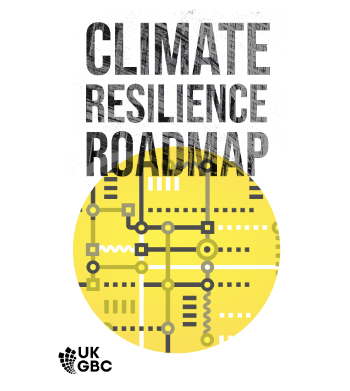Design review
Building design resolves client requirements into a set of instructions for the construction of a building that satisfies those requirements. It tends to follow a relatively consistent process of project definition followed by the iterative development of an increasingly detailed solution.
It is important that regular reviews are carried out during the design process to ensure that the developing design properly reflects the client's requirements and that the design and budget do not diverge.
Design reviews are typically co-ordinated by the lead designer. They may involve the consultant team, the client, independent client advisers and where there is one, the contractor. They may also involve external organisations who specialise in undertaking design reviews.
Design reviews may consider:
- Design quality.
- Value management.
- Design risk management.
- Risks (other than health and safety risks) associated with the design, such as the use of innovative components, long lead time items and and non-standard elements of the design.
- Design co-ordination.
- Procurement route.
- Compliance with the project brief. The project brief should be amended if necessary.
- Compliance with procedures laid out in project execution plan. The project execution plan should be amended if necessary.
- Compliance with relevant legislation, circulars, guides, codes and regulations (in particular the building regulations). This may require consultation with statutory authorities such as the local planning authority, building control officers or the emergency services, who may have views on fundamental aspects of the design.
- Contingency plans.
- The feasibility, buildability, packaging, cost and programming of the design.
- Co-ordination and integration of different elements or packages of the design.
- The need for specialist designers or specialist contractors.
- The need for mock-ups, samples, tests and inspections (in the later stages of the design process it may be appropriate to visit the premises of specialist contractors or suppliers to assess samples, mock-ups and tests).
- Sustainability issues, such as: compliance with any existing client policies or targets, site selection, availability of transport, the local availability of resources and services, the local infrastructure, local ecology, landscape, energy use and energy source, flexibility and durability, waste and water management, material selection, recycling, pollution, resilience to climate change, dismantling and demolition or re-use.
- Development of site waste management plan, including opportunities to reduce consumption of resources and generation of waste.
- Assessment of protocols for submitting design information (for example building information modelling (BIM) protocols).
Following a design review, the lead designer will generally compile comments received as a and instruct the consultant team to amend or develop the design as necessary.
In some circumstances it may be appropriate to commission design reviews from independent client advisers or from specialist design review organisations. These reviews are sometimes referred to as design audits.
On public sector projects, the government requires that gateway reviews are carried out at key points during the development of the project. Gateway reviews are independent peer reviews carried out by a review team on behalf of the senior responsible owner. The review team then prepare a confidential review report for the senior responsible owner.
[edit] Related articles on Designing Buildings Wiki
- Benchmarking.
- BREEAM independent party.
- Client design advisor.
- Concept design.
- Concept architectural design.
- Concept architectural design checklist.
- Crime Prevention Design Advisor.
- Detailed design.
- Design process essentials.
- Design quality.
- Design responsibility matrix.
- Design review panels.
- Design team meeting.
- Design web.
- Design risk management.
- Design workshop.
- Key performance indicators.
- Independent client advisers.
- OGC.
- Presenting to design review panels.
- Qualitative design review.
- Samples and mock-ups.
- Stakeholders.
- Stakeholder matrix.
- User panels.
- Value management.
[edit] External references
Featured articles and news
Latest Build UK Building Safety Regime explainer published
Key elements in one short, now updated document.
UKGBC launch the UK Climate Resilience Roadmap
First guidance of its kind on direct climate impacts for the built environment and how it can adapt.
CLC Health, Safety and Wellbeing Strategy 2025
Launched by the Minister for Industry to look at fatalities on site, improving mental health and other issues.
One of the most impressive Victorian architects. Book review.
Common Assessment Standard now with building safety
New CAS update now includes mandatory building safety questions.
RTPI leader to become new CIOB Chief Executive Officer
Dr Victoria Hills MRTPI, FICE to take over after Caroline Gumble’s departure.
Social and affordable housing, a long term plan for delivery
The “Delivering a Decade of Renewal for Social and Affordable Housing” strategy sets out future path.
A change to adoptive architecture
Effects of global weather warming on architectural detailing, material choice and human interaction.
The proposed publicly owned and backed subsidiary of Homes England, to facilitate new homes.
How big is the problem and what can we do to mitigate the effects?
Overheating guidance and tools for building designers
A number of cool guides to help with the heat.
The UK's Modern Industrial Strategy: A 10 year plan
Previous consultation criticism, current key elements and general support with some persisting reservations.
Building Safety Regulator reforms
New roles, new staff and a new fast track service pave the way for a single construction regulator.
Architectural Technologist CPDs and Communications
CIAT CPD… and how you can do it!
Cooling centres and cool spaces
Managing extreme heat in cities by directing the public to places for heat stress relief and water sources.
Winter gardens: A brief history and warm variations
Extending the season with glass in different forms and terms.
Restoring Great Yarmouth's Winter Gardens
Transforming one of the least sustainable constructions imaginable.






















